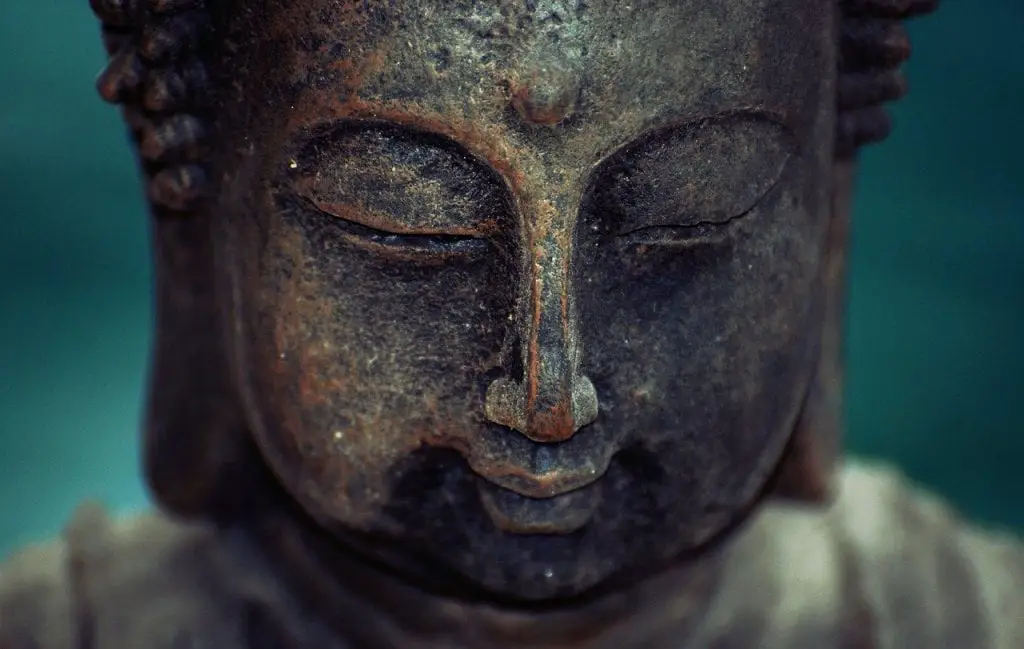
Spirituality is a widely misunderstood term in common perception. People often attribute spirituality in terms of religion and religious practices. Many times, spiritual progress is assessed on a scale that is based on rituals, routine practices, and the search for an unknown divine being. The divine wisdom of Shri Ram Chandra, the founder of Raja yoga is quite remarkable when he says that ‘Spirituality begins when religion ends’. These words are significant in the essential philosophy of Buddhism.
Siddhartha Gautama- the first Buddha developed a path of self-inquiry and not a religion based on dogmas. At a time when the whole world was indulged in outward rituals, he devised meditation or ‘Dhyana’ as the door to knowing thyself. In the history of spirituality, this became a watershed movement permeating all the existing wisdom ever known to man.
Being Spiritual
The practice of spirituality in any religion requires deep faith and persistence. Every tradition has its own set of practices both ritualistic and non-ritualistic, helping the follower to permeate the ordinary experience. Following these practices meticulously with an open mind exposes the individual to spiritual experiences that are beyond our imagination. In Buddhism, this is a mix of both mind and body working together in tandem achieving a balance. But there is no one-stop- solution for attaining this psychomotor balance. Each individual has to explore and seek this experience through an inward journey.
Roots of Buddhist Spirituality
The roots of Buddhist spirituality evolves from the personal experience of Siddhartha Gautama, a prince with all his luxuries haunted by the hollowness of seeing worldly sufferings. This led him to the path of self-discovery, leaving behind all his material possessions and relationships. Owing to this Buddhist spirituality often directs towards understanding the basic existential paradoxes. The religious belief until that time emphasized too much on repentance based on rituals prescribed by high priests. It divided the entire society based on caste often marginalizing the poor ones. Buddha understood that the whole point of life itself is to escape the continuous cycle of birth and death that causes suffering.

Buddhism is also different from other religions primarily because it doesn’t believe in a particular entity/ power as a god. It doesn’t belong to the category of revealed religions with a specific messenger of God. The spiritual traditions in Buddhism put the onus on an individual to seek the ultimate truth by proper actions and not worship. It heavily relies on practice and experimentation for attaining the truth and breaking the karmic bondage. He urged his followers to experiment by saying “Believe nothing until you have experienced it and found it to be true. Accept my words only after you have examined them for yourselves- do not accept them simply because of the reverence you have for me”.
It is a constant journey of trial and error and an intense urge to reach the truth. Such a journey requires discipline and the foremost step for achieving this is by becoming aware. Awareness about the surroundings and the individual (self) as a part of the bigger system. This awareness will normally raise a lot of questions within the individual- a kind of self-talk. The very self-talk is the reason behind the formulation ‘4 Noble Truths’ in Buddhist spirituality.
1) Dukkha – The truth of suffering
2) Samudya– The cause of suffering
3) Nirodha-The cessation of suffering
4) Magga– The path to the cessation of suffering
The 4th Noble truth paved the way for the eightfold path that Buddhism considers as the complete guide to living a fulfilled life. A life that is blissful, compassionate, and radiating with grace. The eightfold path can be seen as the practical application of the noble truths by which a person can escape the endless cycle of suffering. Collectively the eightfold path covers various aspects such as consciousness, knowledge, morality, and contemplation.
Attaining Buddha hood- Knowing Thyself
The great philosopher Osho said “Before Buddha, all religious quests were concerned with searching a God who was unknown and invisible. Aspects of spiritual growth such as liberation and ultimate truth were also to be searched outside an individual”. Buddha created a spiritual rebellion by asking people to search within themselves.
Buddhism as a philosophy believes that everyone is born with the potential to be an enlightened individual- becoming a Buddha. But this inherent capacity has to be nurtured and manifested through constant practice and detachment. Buddhist spirituality also considers the aspect of the impermanence of all creatures. According to this, everything in life is dependent, momentary, and relative. This implies that clinging to a thought process is not at all worth it. This negation of extreme beliefs can be understood from the aspect of embracing a middle path in life. The path that doesn’t get attached or detached too much to anything on this earth.
Our minds have an inherent tendency to wander through different thoughts all the time. The major process in attaining a middle path is to understand the mind and become its master. Every action is originated in the mind before we execute it. In this context, Buddha clarifies that “Mind is everything. What you think you become”. Even though Buddhism is an action-oriented (Karmic) practice, the initial emphasis is on understanding, focusing, and orienting ones’ mind on the right path. But remember that, the process is orienting your mind not controlling it. Usually, Buddhist monks follow a step-by-step routine process to attain this focus and the key to achieving this is becoming mindful.
Mindfulness is now a celebrated term in all meditative techniques. But this goes beyond the usual clichés and auto suggestions. Mindfulness is not a separate practice. It is a dedicated effort of becoming aware of every action we perform. The ability to become the doer and the observer all at the same time. It is not an easy practice at all. The moment a person decides to be mindful, the mind naturally starts to wander. Mindfulness can be achieved by following the Buddhist spiritual practices consistently. Different Buddhist schools of thought have their own methods for achieving this. Initially, it is advisable for an individual to seek the guidance of a spiritual master for understanding and following this path. The spiritual master through his/her experience can guide the seeker to the correct path and help in making constant progress towards the end goal.
Buddhism in Daily Life
Buddhism and its practices are not confined to a group of monks or celibates. The wisdom from Buddhist spirituality is open for all and any layperson can practice it for attaining spiritual progress. The basic practices of Buddhist spirituality are focused on enriching the mind and achieving a perfect balance with the body. Various practices for following Buddhist spirituality is given below,
1)Meditation: it covers a major aspect of Buddhist practices with a goal of achieving mindfulness and peace of mind for an individual. Different types of meditation techniques in Buddhism are breath meditation, mindfulness meditation, transcendental meditation, etc. Meditation doesn’t require any particular tools for it is completely a mind technique. A beginner can start practicing as little as 5-10 minutes of sitting still and gradually progress towards a deep meditative experience. Most of the meditative techniques are premised on observing the breath and gradually acknowledging its rhythm. Consistent practice of meditation calms the mind and helps achieve a balance necessary for spiritual attainment.
2) Mantra (Chanting): repetitive chanting of mantras or sacred verses from the Buddhist texts is also a common practice intended to focus and calm the mind. The repetitive action creates a vibration paving the way for the flow of divine energy throughout a person’s body. “Om Mani Padme Hum” is a famous Buddhist mantra that is often referred to as compassion mantra. Repeated chanting of this mantra is believed to develop intense compassion in the individual.
3) Offering: a spiritual person not only dwells in the mind practices but should support his fellow beings with necessary material support in times of despair. A person can dedicate weekends or free time for voluntary activity without expecting any monetary benefits. This can be teaching unprivileged kids, nursing senior citizens. Apart from their valuable time, a person may donate food, money, or other essentials to monks or spiritual practitioners.
4)Practicing Dharma: the practices for spiritual attainment should bear fruits in our daily actions. The practice of dharma or righteousness in our day-to-day life at the home, office, etc is very important while following this path. Showing empathy and compassion to all fellow beings will eventually elevate our spiritual experience. Refraining from unfair practices, controlling anger, and practicing frugality are all such practices that increase spiritual power in daily life.
5)Studying Sacred Texts: Buddhist texts are huge treasures of wisdom. Most of these original scriptures are in Pali and Sanskrit languages. A practitioner can start learning them by referring to commentaries on these scriptures written by famous Buddhist monks in English. It is also advisable to take part in regular sermons given by the monks either in person or through online media.
Conclusion
Buddhist spirituality is unique in its beliefs and practices as it puts the individual on the center stage of spirituality. Moksha or attainment of liberation is the ultimate responsibility of an individual and is not connected to any religious beliefs or priestly rituals.
Similarly, it doesn’t even project the idea of god but encourages and individual to attain self-awareness. This awareness will naturally blossom the divine energy in each individual and breaks the bondage of birth and suffering. It is a way of life that welcomes any person irrespective of their class, caste creed, and nationality to be a part of that journey.

